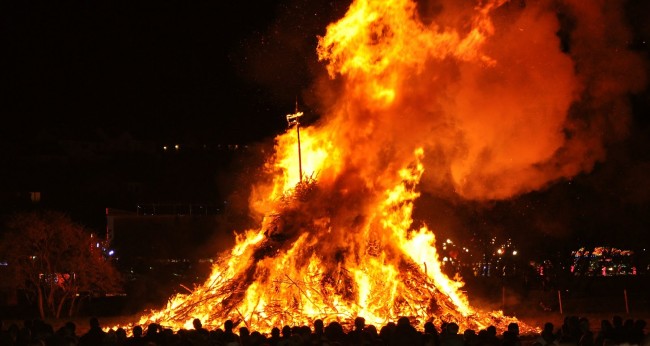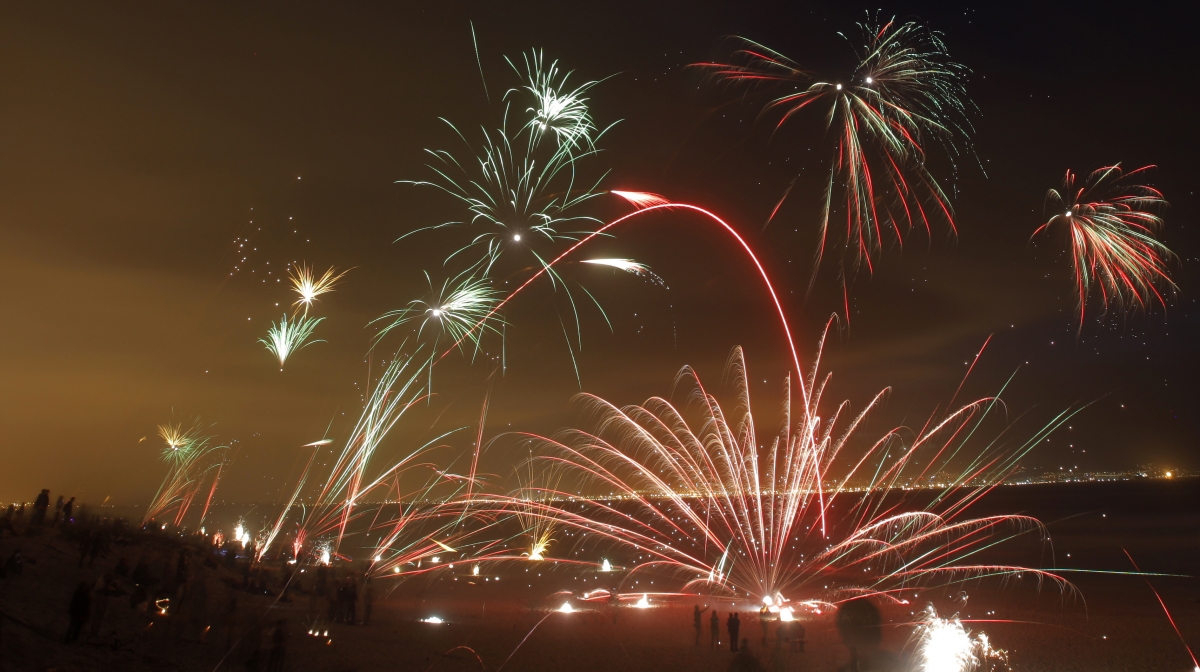Bonfire Night
Bonfire Night is celebrated on November 5 in the United Kingdom and other countries formerly ruled by Great Britain as a celebration involving an act of treason that didn't occur. A group of 13 men planned to blow up Parliament in 1605, killing King James I and many other government officials. The men had hidden 36 barrels full of gunpowder beneath the House of Lords and intended to light the fuse after the King had arrived for the opening of a session of Parliament. Government investigators foiled the plot, catching red-handed Guy Fawkes, the man who was supposed to light the fuse. In commemoration, King James encouraged people to light bonfires and set off fireworks (as a sort of tongue-in-cheek embrace of the literal fireworks that would have resulted had the gunpowder exploded).
People across England and in other countries have celebrated the day with bonfires and fireworks since (with a few exceptions, notably during world wars in the 20th Century). The holiday evolved into a family affair for awhile, wherein familes and friends would gather for smaller bonfires. This occurred while, in other places, cities put on large bonfire and fireworks displays. The earliest mentions to this holiday are to Bonfire Night and to Gunpowder Treason Day; only the former is still in common usage. Because Fawkes was the person caught with the gunpowder, the day has also come to be known as Guy Fawkes Day. Taking the reference one step further, people began to burn straw figures atop bonfires and calling those straw figures Guys, after Guy Fawkes. (The practice of burning effigies atop bonfires was not a new one in the 17th Century, and English people adapted the practice by naming the effigies Guy.)
Also common among English people, particularly children, was the recitation of a nursery rhyme that reminded people of the Gunpowder Plot:
The practice of burning effigies atop bonfires has largely been abandoned, although the tradition of the bonfire itself and of setting off fireworks has been maintained. Countries still celebrating Bonfire Night (or Guy Fawkes Night) include Canada, New Zealand, and (of course) the United Kingdom. Former British colonies Australia and the U.S. celebrated Bonfire Night for a time, but the practice has largely died out in those countries. The observance of November 5 included religious activities for a time. The earliest celebrations included a gathering at a church, punctuated by a sermon, and then followed by a bonfire. Today's Bonfire Night celebrations are largely secular. In recent years, people have embraced the wearing of a Guy Fawkes mask, which purports to show a caricature of Fawkes's face. The mask has become a symbol for anti-establishment causes. |
|
Social Studies for Kids
copyright 2002–2026
David White



 The following year, 1606, the English Government took it one step further and passed the Observance of 5th November Act, designating November 5 as a public day of thanksgiving for the survival of the King and the foiling of what has come to be known as the
The following year, 1606, the English Government took it one step further and passed the Observance of 5th November Act, designating November 5 as a public day of thanksgiving for the survival of the King and the foiling of what has come to be known as the  Children built their own straw effigies of Guy Fawkes for Bonfire Night; one practice that developed was the parading of the effigy, or the "Guy," through the streets, with children saying, "Penny for the Guy?" as a means of obtaining coins to buy fireworks for the night-time celebrations.
Children built their own straw effigies of Guy Fawkes for Bonfire Night; one practice that developed was the parading of the effigy, or the "Guy," through the streets, with children saying, "Penny for the Guy?" as a means of obtaining coins to buy fireworks for the night-time celebrations.
